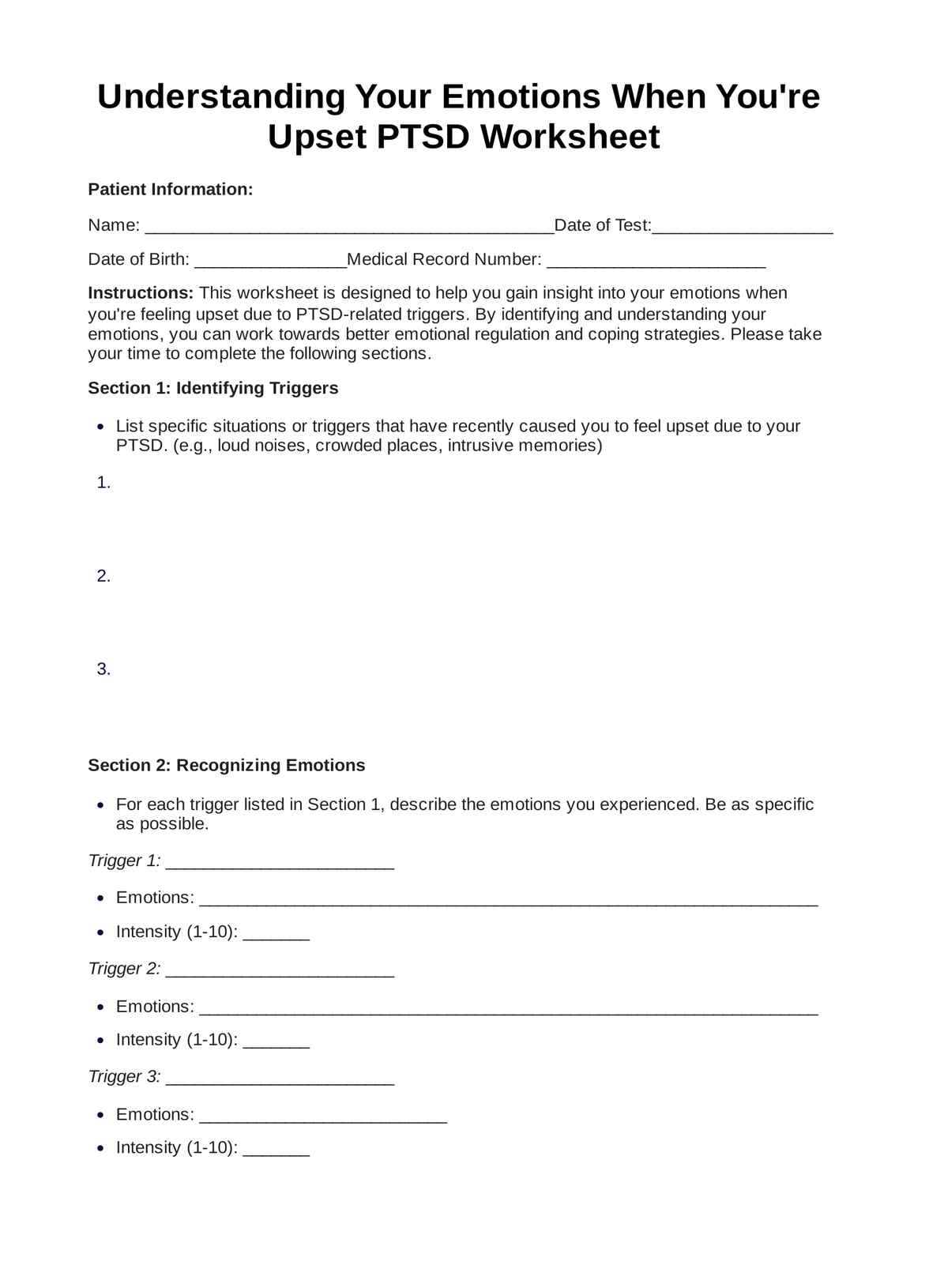This worksheet is designed to help individuals with Post-Traumatic Stress Disorder (PTSD) understand and manage their emotions when they feel upset due to PTSD triggers.

Understanding Your Emotions When You're Upset PTSD Worksheet
Manage PTSD: Explore Emotions in Upset with Our Worksheet - Improve Healthcare & Coping Skills Today!
Use Template
Understanding Your Emotions When You're Upset PTSD Worksheet Template
Commonly asked questions
This worksheet can be used by individuals dealing with PTSD as a self-help tool and by healthcare professionals, including therapists and counselors, to assist their clients in therapy.
No, this worksheet is not a substitute for professional therapy. It can complement treatment by providing a structured way to explore emotions and develop coping strategies, but it should differ from professional guidance.
EHR and practice management software
Get started for free
*No credit card required
Free
$0/usd
Unlimited clients
Telehealth
1GB of storage
Client portal text
Automated billing and online payments











